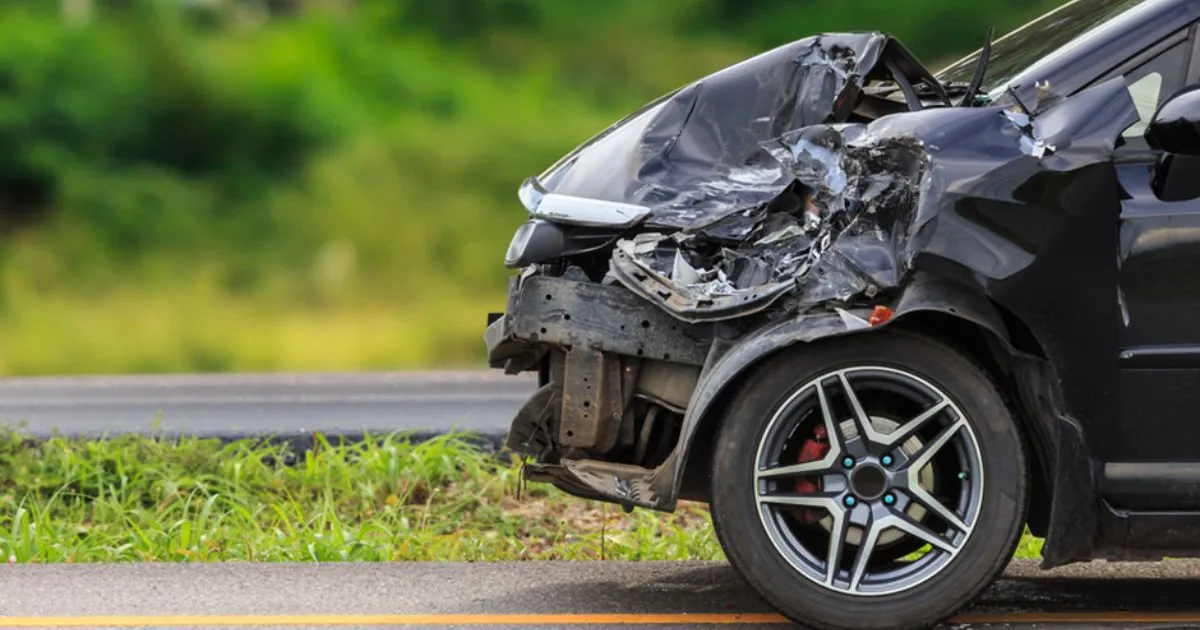What To Do If You're Involved In A Hit & Run
Nobody wants to be involved in a car accident, especially one where the other party flees the scene. In Australia, hit and run incidents are not just frustrating—they're a serious legal offense that can result in substantial fines and demerit points for the perpetrator. According to the Australian Automobile Association's 2023 road safety report, there has been a concerning increase in hit and run incidents across major Australian cities, particularly in busy parking lots and street parking spaces. Whether your vehicle was hit while parked in a shopping centre car park or you were involved in a collision on the road, knowing the proper steps to take can make a significant difference in the outcome. This guide will walk you through exactly what to do if you find yourself the victim of a hit and run, ensuring you're well-equipped to handle this stressful situation with confidence and clarity.
Make Sure You Have Comprehensive Insurance Coverage
One of the most crucial protections against hit and run incidents is having the right insurance coverage in place before anything happens. Comprehensive car insurance is widely considered the best type of car insurance policy for several reasons, but especially when it comes to hit and run scenarios. Unlike third-party policies, comprehensive coverage is specifically designed to protect your vehicle even when the at-fault party cannot be identified—a common occurrence in hit and run situations.
As Daniel Battaglia, writer of Parking Made Easy: Making Life Easier, notes: "Nobody wants to be involved in a car accident. Even if you're fortunate enough to survive a motor accident without a scratch, dealing with the damage to your car and sorting out details with other parties involved is just a headache that we can all definitely live without." This protection is particularly valuable for vehicles parked in high-traffic public parking garages or open parking stations where incidents are more common.
When your vehicle is hit while parked, evidence becomes crucial for your insurance claim. If your car was damaged in a street parking area or car park with CCTV cameras, request this footage immediately. Similarly, dashcams that activate upon impact can provide invaluable evidence. According to Insurance Australia Group data, vehicles with dashcams are 40% more likely to have successful claims processed in hit and run cases.

Report the Incident to Local Police Promptly
Reporting a hit and run incident to police is not just about trying to catch the perpetrator—it's a critical step in your insurance claim process and helps combat this type of behavior across Australia. After ensuring everyone's safety, your next priority should be documenting and reporting the incident properly.
For non-emergency reporting when the other driver has already fled the scene, call the Police Assistance Line (131 444) nationwide, which handles non-urgent reporting and assistance. However, if anyone is injured or the perpetrator is still visible (perhaps stuck in traffic), call 000 immediately. The Victoria Police Department states that reporting hit and run incidents helps them identify patterns and hotspots, ultimately making their roads and parking facilities safer for everyone.
Remember to report the incident as soon as possible—this creates an official timestamp and ensures details are fresh in your memory. Be prepared to provide:
- The exact location and time of the incident
- A description of the other vehicle (if seen), including color, make, model, and partial plate number if possible
- Names and contact information of any witnesses
- Photos of the damage and the surrounding parking area or roadside location
- Direction the other vehicle was traveling when it left
Assist With Any Injuries Before Anything Else
Your legal and moral responsibility after any traffic accident, including a hit and run, is to prioritize human safety above all else. As per Right2Drive, "If you find yourself involved in or witness to a hit and run incident, always prioritize safety and legal compliance." Under Australian road safety laws, failing to assist someone injured in an accident you're involved in can result in serious penalties, including license suspension or even criminal charges depending on the severity of injuries left untreated.
When you're seeking secure parking spaces to rent, safety should always be a priority, but even in the safest environments, accidents can happen. If you or any passengers are injured in a hit and run, call 000 immediately. Remember that you should only assist others if you're physically able to do so safely—you can't help someone else if you're severely injured yourself.
It's normal to experience shock after an accident, which can impair judgment and decision-making. Try to remain calm by:
- Taking several deep breaths before taking action
- Focusing on one task at a time
- Speaking calmly to others involved
- Moving to a safe location away from traffic if possible
- Accepting help from bystanders if offered

Document Everything With Photos and Notes
In the digital age, your smartphone is one of your most powerful tools after a hit and run incident. Taking comprehensive photos can significantly strengthen your insurance claim and provide valuable evidence if the perpetrator is later identified. The Insurance Council of Australia recommends documenting everything thoroughly, as claims with visual evidence are processed up to 30% faster than those without.
When photographing the scene, be thorough and systematic:
- Capture multiple angles of all damage to your vehicle
- Take wide shots showing the entire parking spot and surrounding parking spaces
- Photograph any paint transfers or debris left behind
- Document the exact location, including nearby landmarks or parking space numbers
- Take photos of road or weather conditions that might be relevant
- If there are security cameras in the area, photograph their position
Beyond photos, take detailed notes about the incident while your memory is fresh. Record the exact time, location, what you were doing (parking, returning to your parked car, etc.), and any details you recall about vehicles that were nearby. If you're in a busy CBD parking area, note any businesses that might have security footage.
Consider Private Investigation Options
While police will investigate serious hit and run incidents, their resources are often limited for cases involving only property damage. In situations where significant damage has occurred and you have partial information about the other vehicle, considering private investigation options may be worthwhile.
Start by checking if neighbouring businesses or residences might have security footage. Many modern apartment buildings and businesses have cameras overlooking adjacent car parks and street parking areas that might have captured the incident or the fleeing vehicle. Most establishments are willing to review footage if you can provide the exact time and location of the incident.
Social media can also be a powerful investigation tool. Local community Facebook groups often have thousands of members, and a post about a hit and run in a specific location sometimes yields witnesses who didn't remain at the scene. Include the time, location, and a photo of your damaged vehicle, but avoid publicly accusing anyone without definitive proof. You can also engage professional services if the damage is substantial, as many premium parking providers partner with security firms that can assist with investigations.

Conclusion: Taking Control After a Hit and Run
Being the victim of a hit and run can leave you feeling violated and frustrated, but taking the right actions afterward puts you back in control of the situation. Remember to prioritize safety first, document everything thoroughly, report promptly to police, and engage with your insurance provider with all available evidence. The steps you take immediately after the incident can significantly impact your ability to recover costs and potentially identify the responsible party.
While we hope you never need to use this guide, keeping these steps in mind will help you respond effectively if you ever find your vehicle damaged in a public parking garage or private parking lot. At Parking Made Easy, we're committed to making every aspect of parking simpler and less stressful for Australians. If you're looking to avoid high-risk parking situations altogether, consider signing up free to our platform to find secure, reliable parking spaces across Australia. Have you ever experienced a hit and run? Share your experience in the comments below to help others learn from your situation.
**About the Author:** Daniel Battaglia is the Founder and Chief Executive Officer at ParkingMadeEasy.com.au. Daniel has been working in the parking and urban mobility sector since 2012. With a passion for simplifying parking and helping people save money and time, Daniel provides expert insights into the benefits of finding, booking and renting car parking spaces with the help of Generative AI. For enquiries, you can reach Daniel directly at daniel@parkingmadeeasy.com.au.






